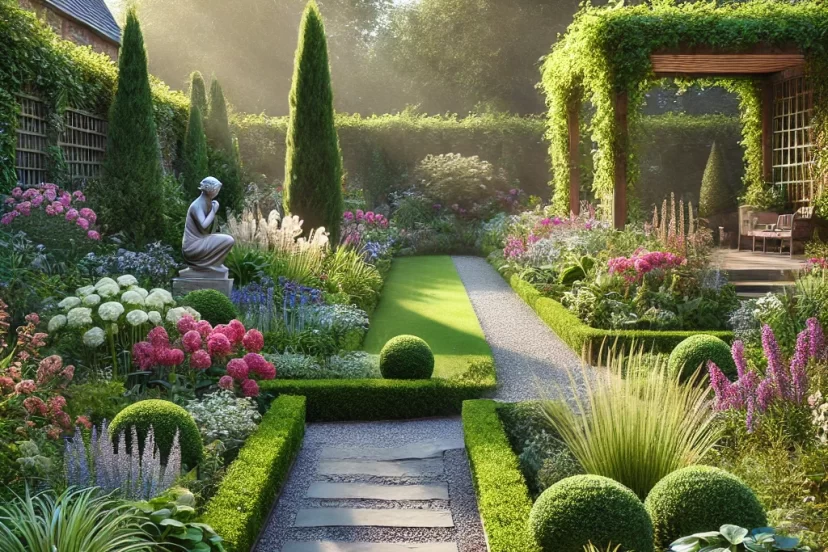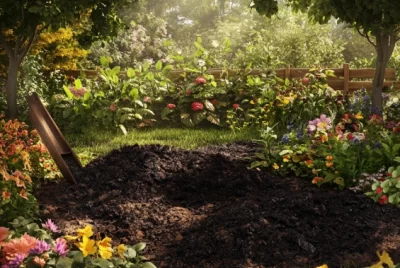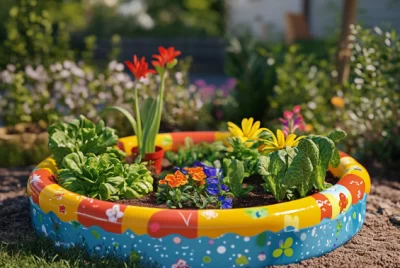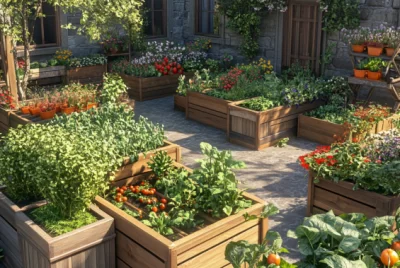Fine Gardening: A Comprehensive Guide to Mastering Your Garden
When it comes to creating a beautiful and thriving garden, fine gardening is the way to go. Fine gardening isn’t just about planting flowers and shrubs; it’s about creating a well-planned, carefully maintained space that brings you joy all year round. Whether you’re a beginner or have some experience, fine gardening offers a fulfilling challenge and countless benefits. In this guide, we’ll explore everything you need to know to start or refine your fine gardening practices, from planning your garden to maintaining it through the seasons.
What is Fine Gardening?
Fine gardening is the art of creating and maintaining a garden that is both aesthetically pleasing and healthy. It involves more than just choosing pretty plants; it’s about understanding your environment, selecting the right plants, and caring for them with precision. Fine gardening requires a bit more effort and attention to detail than basic gardening, but the results are worth it. You end up with a garden that looks stunning and thrives throughout the year.
Importance of Fine Gardening
So, why should you invest the time and energy into fine gardening? First and foremost, a well-tended garden adds beauty and value to your home. It’s a space where you can relax, entertain, and enjoy the outdoors. Beyond aesthetics, fine gardening promotes a healthier environment. By selecting the right plants and using proper gardening techniques, you can create a garden that supports local wildlife, conserves water, and reduces the need for harmful chemicals.
Planning Your Fine Garden
Before you start digging in the soil, it’s essential to plan your garden carefully. Good planning is the foundation of fine gardening and will save you time and effort down the road.
Assessing Your Space and Climate
The first step in planning your fine garden is to assess the space you have available and understand the climate in your area. Not all plants will thrive in every environment, so it’s important to know what will work best in your garden.
Understanding Your Hardiness Zone
Your hardiness zone tells you which plants are most likely to thrive in your area based on temperature. By knowing your zone, you can choose plants that are suited to your climate, ensuring they will survive and flourish year after year.
Soil Testing and Preparation
The soil in your garden plays a significant role in the health of your plants. Before you start planting, it’s a good idea to test your soil to see what nutrients it might be lacking. Depending on the results, you may need to add compost or other soil amendments to create the perfect growing environment for your plants.
Selecting the Right Plants
Choosing the right plants is crucial for fine gardening. The plants you select should be suited to your climate, soil, and the amount of sunlight your garden receives. By picking the right plants, you’ll set your garden up for success from the start.
Perennials vs. Annuals
When selecting plants, you’ll need to decide between perennials, which come back year after year, and annuals, which last for just one growing season. Both have their place in fine gardening. Perennials offer long-term beauty with less maintenance, while annuals provide vibrant color and variety each year.
Choosing Plants for Year-Round Interest
To keep your garden looking beautiful throughout the year, consider plants that offer something special in each season. This might include spring bulbs, summer flowers, fall foliage, and winter evergreens. By planning for year-round interest, your garden will always have something to offer, no matter the season.
Designing Your Fine Garden
Once you’ve planned your garden and selected the right plants, it’s time to focus on the design. The design of your garden is what will make it truly stand out. Fine gardening design is about creating a space that is not only functional but also visually appealing, with a sense of balance and harmony.
Principles of Garden Design
The principles of garden design are the foundation of a well-crafted garden. When you understand these principles, you can create a space that feels cohesive and inviting.
Balance, Unity, and Harmony
Balance in your garden can be achieved by distributing plants and garden features evenly. You can create balance with symmetry, where both sides of a garden mirror each other, or with asymmetry, where different elements are balanced by their visual weight. Unity and harmony are about ensuring that all parts of your garden work together. This means choosing plants, colors, and materials that complement each other and create a unified look.
Focal Points and Plant Groupings
A focal point is an element in your garden that draws the eye. This could be a statue, a water feature, or even a particularly striking plant. Use focal points to anchor your garden and create interest. Surrounding your focal points with well-thought-out plant groupings can enhance their effect. Group plants with similar needs together, and vary the heights and textures to add depth and complexity to your garden design.
Color Theory in Gardening
Color is a powerful tool in garden design. By understanding color theory, you can create a garden that is vibrant and visually appealing.
Creating Color Schemes
When planning your garden’s color scheme, think about the mood you want to create. Warm colors like reds, oranges, and yellows are energizing and can make a space feel cozy. Cool colors like blues, greens, and purples are calming and can make a garden feel more expansive. You can choose a monochromatic color scheme for a sophisticated look, a complementary scheme for striking contrast, or an analogous scheme for a harmonious blend.
Using Color to Enhance Garden Aesthetics
Color can be used to draw attention to certain areas of your garden or to create a sense of flow. For example, planting bright, warm-colored flowers near the entrance of your garden can create a welcoming feel, while cooler colors can be used in the background to make the space feel larger. Consider the seasonal changes in color, too, and plan for year-round interest by choosing plants that bloom at different times or have colorful foliage.
Garden Layout and Structure
The layout and structure of your garden are crucial to its overall success. A well-planned layout ensures that your garden is easy to navigate and that every plant has the right conditions to thrive.
Pathways and Borders
Pathways guide you through the garden and can help create a sense of order and flow. They can be made from various materials such as gravel, brick, or stone, each adding its own texture and style. Borders are the edges of your garden beds and can be used to define spaces or create a neat, finished look. Use borders to frame your plants and keep them contained, while pathways provide easy access for maintenance and enjoyment.
Incorporating Hardscaping Elements
Hardscaping refers to the non-plant elements in your garden, such as patios, benches, trellises, and water features. These elements add structure and functionality to your garden. For instance, a pergola can provide shade and a place for climbing plants, while a water feature can create a soothing atmosphere. The key is to integrate these elements seamlessly into your garden’s design so that they enhance rather than overwhelm the natural beauty of your plants.
Implementing Fine Gardening Techniques
With your garden designed and laid out, the next step is to implement the techniques that will keep it looking its best. Fine gardening involves specific practices that promote the health and beauty of your plants.
Pruning and Shaping Plants
Pruning is an essential fine gardening technique that helps control the growth of your plants, encourages flowering, and removes any dead or diseased parts. Proper pruning not only keeps your garden looking tidy but also improves plant health.
Techniques for Different Plant Types
Different plants require different pruning techniques. For example, roses benefit from regular pruning to encourage new blooms, while shrubs may need to be thinned out to maintain their shape. It’s important to learn the specific needs of each plant in your garden to prune them effectively. For instance, when pruning trees, you should focus on removing crossing branches and deadwood, while for perennials, you might cut them back after flowering to promote a second bloom.
Timing and Tools for Effective Pruning
Timing is critical when it comes to pruning. Some plants should be pruned in late winter or early spring before new growth begins, while others are best pruned after they have flowered. Using the right tools, such as sharp pruners and loppers, makes the job easier and ensures clean cuts that heal quickly. Always sanitize your tools between plants to prevent the spread of disease.
Mulching and Soil Conditioning
Mulching and soil conditioning are vital practices in fine gardening that help maintain healthy plants and soil. Mulch serves multiple purposes, from retaining moisture to suppressing weeds and adding nutrients to the soil as it breaks down.
Types of Mulch and Their Benefits
There are various types of mulch to choose from, each offering different benefits. Organic mulches, such as wood chips, straw, or compost, improve soil structure as they decompose. Inorganic mulches, like gravel or black plastic, are excellent for controlling weeds and conserving moisture but don’t add nutrients to the soil. Choose the type of mulch that best suits your garden’s needs, and apply it in a thick layer around your plants, being careful not to pile it against the stems.
Soil Amendments for Optimal Growth
Healthy soil is the foundation of a successful garden. Depending on your soil test results, you may need to amend your soil with compost, manure, or other organic materials to improve its structure and fertility. Adding compost regularly enriches the soil with essential nutrients and beneficial microbes. For particularly challenging soils, like heavy clay or sandy soils, you might need to add specific amendments, such as gypsum or peat, to improve texture and drainage.
Watering Strategies for Fine Gardens
Watering is one of the most critical aspects of garden maintenance. Fine gardening requires careful attention to how, when, and how much you water your plants to keep them healthy without wasting resources.
Drip Irrigation and Efficient Water Use
Drip irrigation is a highly efficient way to water your garden. It delivers water directly to the base of each plant, reducing evaporation and runoff. This method ensures that your plants get the water they need without overwatering, which can lead to root rot and other issues. Setting up a drip irrigation system might require an initial investment, but it pays off by saving water and time in the long run.
Understanding Plant Water Needs
Not all plants need the same amount of water. Some, like succulents and Mediterranean herbs, prefer drier conditions, while others, like ferns and hostas, thrive in consistently moist soil. By grouping plants with similar water needs together, you can water more efficiently and avoid over or under-watering. Pay attention to the signs your plants give you—wilting, yellowing leaves, or dry soil can all indicate that your plants need more water, while soggy soil or moldy patches might mean you’re watering too much.
Seasonal Maintenance in Fine Gardening
Fine gardening requires ongoing care and attention throughout the year. By adjusting your gardening tasks according to the seasons, you can keep your garden looking its best no matter the time of year.
Spring Tasks
Spring is a time of renewal in the garden, and it’s when much of your hard work will begin to show. This season is all about preparation and planting.
Preparing Beds and Planting
As the ground begins to thaw, it’s time to prepare your garden beds. Remove any debris that may have accumulated over the winter, such as fallen leaves or branches. Turn the soil to aerate it, and add compost or other soil amendments to enrich it. Once your beds are ready, you can start planting your spring bulbs, annuals, and early vegetables. Be mindful of your hardiness zone and plant only when the danger of frost has passed.
Fertilizing and Weed Control
Spring is also the time to start fertilizing your plants to give them a strong start. Choose a balanced fertilizer that suits your garden’s needs, whether organic or synthetic. Applying a pre-emergent weed control can help prevent weeds from taking over your garden as the weather warms up. Mulching after planting will also suppress weeds and keep the soil moist.
Summer Care
Summer is when your garden is in full bloom, but it’s also when it requires the most attention to stay healthy and vibrant.
Deadheading and Managing Growth
Deadheading, or removing spent flowers, is an essential summer task that encourages plants to produce more blooms. Regularly inspect your garden and trim back any overgrown or leggy plants to keep them looking tidy. This also allows more light and air to reach the center of the plants, reducing the risk of disease.
Dealing with Pests and Diseases
Summer is prime time for garden pests and diseases, so vigilance is key. Keep an eye out for common issues like aphids, spider mites, and powdery mildew. Use organic pest control methods, such as neem oil or insecticidal soap, whenever possible. For disease control, proper spacing and airflow between plants are crucial. Remove any affected leaves or plants promptly to prevent the spread of disease.
Fall and Winter Preparation
As the growing season winds down, fall and winter are the times to prepare your garden for the colder months ahead and the next growing season.
Winterizing Your Garden
Winterizing your garden is all about protecting your plants from harsh weather. Start by cutting back perennials and mulching around the base of plants to insulate the roots. In colder climates, you might also need to wrap shrubs or cover delicate plants with burlap. Drain and store any irrigation systems or hoses to prevent freezing and cracking.
Planning for Next Season
Fall is also a great time to reflect on your garden’s successes and challenges. Take note of what worked well and what didn’t, and start planning for next year. You can plant spring bulbs now for early color next season and prepare new garden beds by layering compost and mulch to break down over the winter.
Fine Gardening for Different Spaces
Fine gardening is adaptable to various spaces, whether you’re working with a small urban plot or a large rural landscape. Understanding how to maximize your space is key to successful fine gardening.
Fine Gardening in Small Urban Spaces
Urban gardening comes with its own set of challenges, but with the right techniques, you can create a lush, vibrant garden even in a small space.
Maximizing Space with Vertical Gardening
When space is limited, vertical gardening is an excellent solution. Use trellises, wall-mounted planters, or even stackable containers to grow plants upward rather than outward. This approach not only saves space but also adds an extra layer of visual interest to your garden.
Container Gardening Techniques
Container gardening is perfect for patios, balconies, and small yards. Choose containers that are large enough for your plants’ root systems and ensure they have proper drainage. Group containers together for a lush, layered look, and use a variety of plants, from flowers to vegetables, to make the most of your space.
Creating Fine Gardens in Large Landscapes
If you have a larger garden space, fine gardening allows you to create expansive, well-planned landscapes that can include a variety of features.
Managing Large Plantings and Maintenance
In larger gardens, it’s important to plan for manageable maintenance. Group plants with similar water and sunlight needs together to make irrigation easier, and consider using low-maintenance plants in areas that are harder to reach. Regular mulching and strategic planting can reduce the need for weeding and watering.
Incorporating Wildlife Habitats
A large garden gives you the opportunity to support local wildlife. Consider planting native plants that attract pollinators like bees and butterflies. Adding features like bird feeders, bat houses, or small ponds can also create a welcoming habitat for various creatures, enriching your garden’s ecosystem.
Sustainability in Fine Gardening
Sustainability is an essential aspect of fine gardening, ensuring that your garden is not only beautiful but also environmentally friendly.
Eco-Friendly Practices
Practicing sustainability in your garden helps protect the environment and often results in healthier plants.
Composting and Organic Mulch
Composting is a great way to recycle garden waste and kitchen scraps, turning them into nutrient-rich soil for your plants. Organic mulch, such as wood chips or straw, not only nourishes the soil as it breaks down but also helps conserve moisture and reduce the need for chemical fertilizers.
Water Conservation Techniques
Water is a precious resource, and conserving it is key to sustainable gardening. Techniques like drip irrigation, mulching, and selecting drought-tolerant plants can significantly reduce water usage. Collecting rainwater in barrels for use in your garden is another effective way to conserve water.
Native Plants and Biodiversity
Using native plants in your garden supports local biodiversity and reduces the need for extra care.
Benefits of Native Plants
Native plants are adapted to the local climate and soil conditions, making them easier to care for and more resistant to pests and diseases. They also provide food and shelter for local wildlife, helping to maintain the ecological balance.
Supporting Local Ecosystems
By incorporating a variety of native plants, you create a garden that supports the entire ecosystem. Birds, insects, and other animals rely on these plants for food and habitat. A biodiverse garden is more resilient and less likely to be overrun by pests or disease, as the natural predators and beneficial insects will keep things in balance.
Fine Gardening Conclusion
Fine gardening is a rewarding pursuit that combines the beauty of nature with thoughtful design and careful maintenance. By planning your garden, selecting the right plants, and using sustainable practices, you can create a space that brings joy throughout the year. Whether you’re working with a small urban space or a sprawling landscape, fine gardening offers endless possibilities to express your creativity and connect with the natural world.
The key to fine gardening is attention to detail—taking the time to understand your plants and your space, and then nurturing them with care. As you continue to refine your garden, you’ll discover the deep satisfaction that comes from watching it flourish, knowing that your efforts have created something truly special. So, roll up your sleeves, get your hands in the soil, and enjoy the journey of fine gardening.
Frequently Asked Questions about Fine Gardening
1. What is the difference between fine gardening and regular gardening?
Fine gardening involves a higher level of planning, attention to detail, and ongoing maintenance compared to regular gardening. It focuses on creating a well-designed, aesthetically pleasing garden that thrives year-round. Regular gardening may involve basic planting and care, while fine gardening incorporates advanced techniques like strategic plant selection, pruning, and sustainable practices to enhance the garden’s beauty and health.
2. How do I choose the right plants for fine gardening in my area?
Choosing the right plants for fine gardening starts with understanding your hardiness zone and the specific conditions in your garden, such as soil type, sunlight, and moisture levels. Opt for plants that are well-suited to your climate and consider a mix of perennials and annuals to ensure year-round interest. Native plants are often a great choice because they are adapted to the local environment and require less maintenance.
3. What are some essential techniques for maintaining a fine garden throughout the year?
Maintaining a fine garden involves several key techniques, including regular pruning to encourage healthy growth, mulching to retain moisture and suppress weeds, and using drip irrigation to efficiently water plants. Seasonal tasks like fertilizing in spring, deadheading in summer, and winterizing in fall are also crucial for keeping your garden vibrant and healthy throughout the year.
4. How can I design a small garden space to make it look larger and more interesting?
In a small garden space, vertical gardening and container gardening are excellent strategies to maximize space. Use trellises, wall-mounted planters, and stackable containers to grow plants upward. Creating a layered look with different plant heights and textures can also add depth and interest. Additionally, choosing a cohesive color scheme can make the space feel more unified and expansive.
5. What sustainable practices can I incorporate into fine gardening?
Sustainability is key to fine gardening. You can incorporate eco-friendly practices like composting garden waste to enrich your soil, using organic mulches to conserve moisture, and selecting drought-tolerant plants to reduce water usage. Drip irrigation systems and rainwater collection are also effective ways to conserve water. Additionally, planting native species helps support local ecosystems and reduces the need for chemical interventions.




